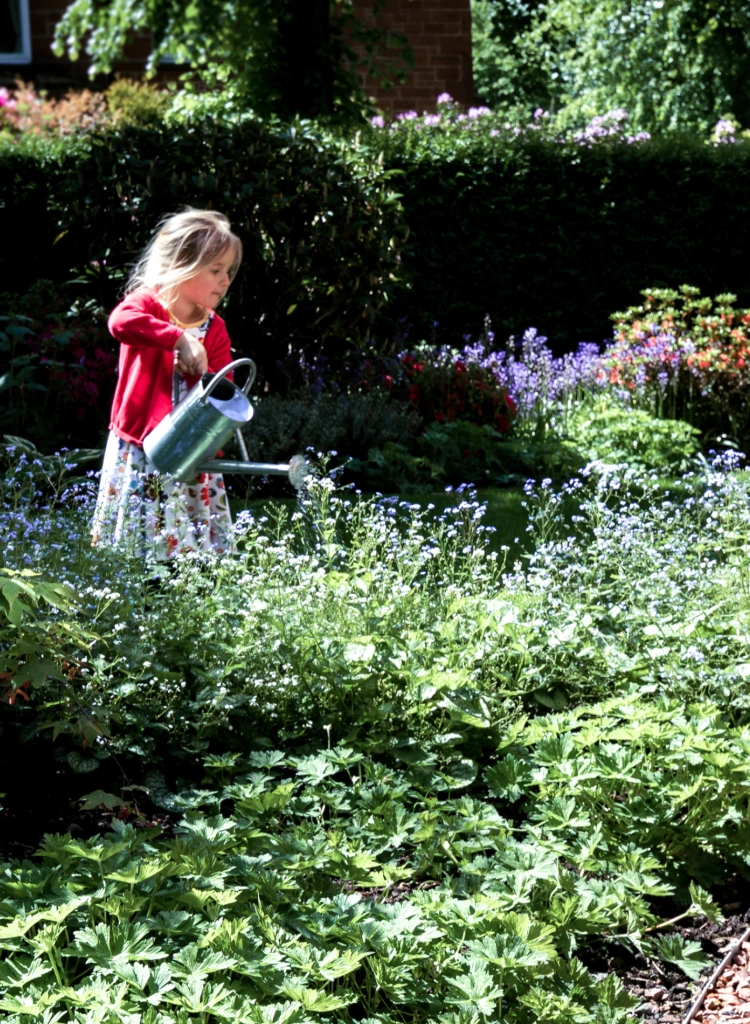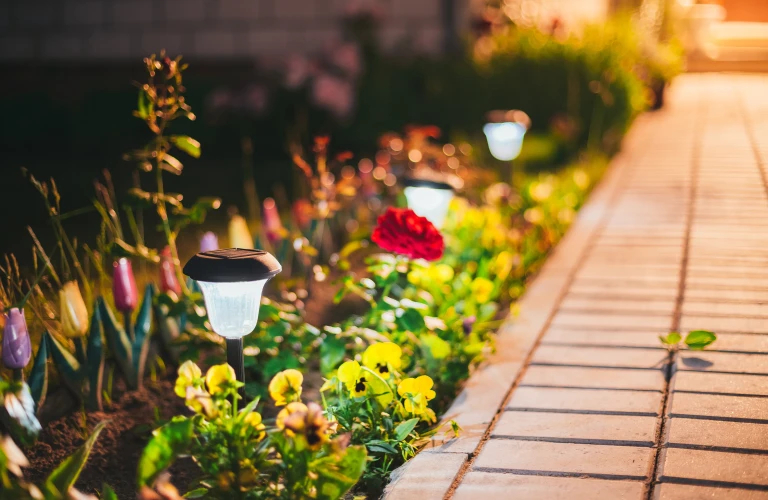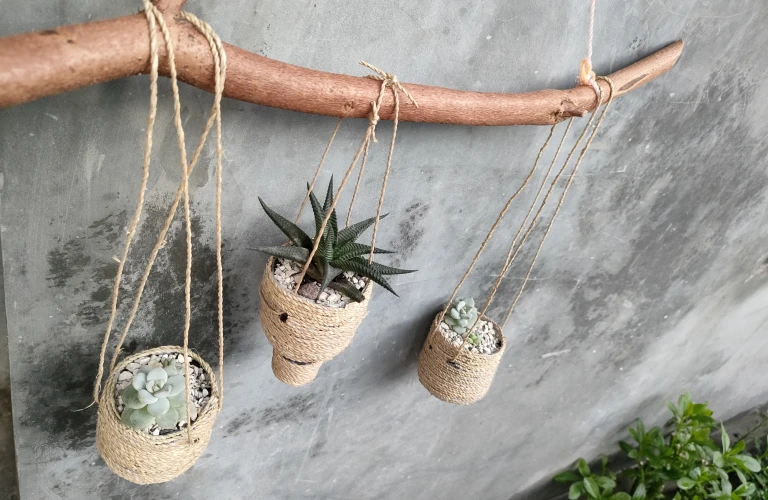
Soft Landscaping for Biodiversity: Enhancing Eco-Value & Serenity
In the midst of urban expansion, soft landscaping, including lawns and diverse plant species curated by garden designers, emerges as a vital tool for nurturing biodiversity and offering environmental benefits. Rewinding to the gardens of Victorian England, where meticulous design favoured aesthetics over ecology, focusing on lawns and yard aesthetics, today’s green spaces, as outdoor areas with diverse plant characteristics, are evolving. They now embody a sanctuary for wildlife, intertwining nature with urban life. By integrating native plants and creating diverse habitats, soft landscaping is not just about beautifying our surroundings; it’s an investment in the environmental health of our communities. This approach to garden design and land management is reshaping ecosystems one plot at a time, fostering resilience against climate change and promoting a symbiotic relationship between humans and nature.
Understanding Biodiversity Net Gain
Key Principles
Biodiversity net gain is a conservation approach that leaves the natural environment in a measurably better state than beforehand. It involves developers working to enhance biodiversity on or near their development sites as a condition of planning permission. They achieve this by creating new habitats, including milkweed, enhancing existing ones like rhs gardens, and providing long-term management.
Developers must first assess the site’s pre-development biodiversity value. They then design interventions to improve it post-development. The aim is for these actions to result in a net gain in biodiversity, often quantified as a percentage increase over the baseline.
Measurement Methods
To measure biodiversity net gain accurately, standardised metrics are used. These might include the Defra metric in the UK, which calculates habitat losses and gains in ‘biodiversity units.’ Developers use this tool to ensure their projects deliver the required ecological enhancements.
Measuring involves surveying species and habitats before development starts. After completion, monitoring continues to verify that biodiversity improvements are sustained over time. This process ensures transparency and accountability.
Policy Framework
The UK Government has embedded biodiversity net gain within its environmental policy framework. The Environment Act 2021 mandates a 10% increase in biodiversity on new developments. This legislative backing underscores the government’s commitment to reversing nature loss.
Local planning authorities integrate biodiversity net gain requirements into their local plans. They work closely with developers to agree on appropriate strategies for each site.
Implementation Challenges
Implementing biodiversity net gain presents challenges such as finding suitable land for habitat creation or enhancement. There can also be difficulties in ensuring long-term management and funding for these areas.
Moreover, there’s a need for skilled ecologists to conduct accurate assessments and monitor progress effectively. Without proper expertise, achieving real gains becomes more difficult.
Community Benefits
Beyond conservation gains, biodiversity net gain provides community benefits like improved green spaces and enhanced ecosystem services such as flood regulation and air purification.
Communities often have opportunities to engage with these projects through consultation processes or volunteering activities. Such involvement can foster stronger connections between people and their local environments.
Balancing Client Desires with Environmental Needs
Client Preferences
Clients often have specific visions for their gardens or green spaces. They desire aesthetics, functionality, and sometimes a status symbol. They want vibrant flowerbeds, manicured lawns, and stylish outdoor features. It’s crucial to listen carefully to these desires. This ensures the final design reflects their personality and lifestyle.
t landscaping can meet client demands while promoting biodiversity. Native plant species can be selected for beauty and ecological value. They attract local wildlife and support complex ecosystems. Clients appreciate a garden that teems with life, where butterflies flutter and birds sing.
Ecological Considerations
The health of our planet hinges on biodiversity. Landscapers must consider the environmental impact of each project. This includes soil health, water usage, and the choice of plants.
Incorporating sustainable practices is key. These might include rain gardens to manage stormwater or using mulch to conserve soil moisture. Choosing drought-tolerant plants reduces water consumption. Each decision contributes to a healthier environment without compromising on visual appeal.
Collaborative Planning
Achieving balance requires collaboration between landscapers and clients from the outset. Open dialogue about the importance of biodiversity educates clients on sustainable choices. It’s about finding common ground where client wishes align with ecological best practices.
Landscapers can provide options that satisfy aesthetic desires while ensuring biodiversity net gain. For instance, a client may want a hedge for privacy; suggesting a native hedgerow provides this while offering habitat for wildlife.
Practical Implementation
Once plans are agreed upon, implementation follows best practices for minimal disruption to existing ecosystems. Careful planting schedules protect nesting seasons for birds or breeding times for insects.
Maintenance plans are also important; they ensure gardens remain biodiverse havens long-term. Regular check-ins with clients help them understand the evolving nature of their garden as it grows into a self-sustaining ecosystem.
Community Impact
t landscaping projects extend beyond individual properties; they influence local environments too. A single garden can create corridors for wildlife movement across urban landscapes.
Encouraging clients to think beyond their boundaries has powerful ripple effects in communities. Collective action leads to larger green networks, fostering regional biodiversity resilience.
Key Garden Features for Biodiversity Enhancement
Native Planting
Gardeners can support local wildlife by selecting native plants. These species have evolved alongside indigenous fauna, creating a symbiotic relationship that benefits both plant and animal life. Native flowers, shrubs, and trees provide essential food and shelter for insects, birds, and mammals. They often require less maintenance as they are adapted to the local climate and soil conditions.
Incorporating a variety of native plants ensures year-round resources. It’s important to consider flowering times to offer continuous nectar sources for pollinators. A mix of perennials, annuals, and biennials will sustain a diverse range of creatures throughout the seasons.
Water Sources
Water features are vital for attracting biodiversity into gardens. A simple bird bath or a small pond can provide drinking water for birds and mammals. They also create habitats for amphibians like frogs and newts. Insects such as dragonflies may breed in still water, while bees often need shallow water sources to drink from.
It’s crucial to ensure safe access to these features. Sloping sides on ponds allow animals to enter and exit without risk of drowning. Stones or logs can be placed in bird baths so that smaller creatures can perch safely while hydrating.
Shelter Spots
Creating hiding spots is essential for many species’ survival. Log piles serve as excellent refuges for insects, fungi, and small mammals. Compost heaps not only recycle garden waste but also provide warmth and food for decomposers like worms.
Bird boxes encourage avian visitors to nest safely within the garden confines. Different species prefer various box sizes and entrance holes; therefore, offering an array should cater to multiple preferences.
Hedgehogs benefit from leaf piles or dedicated hedgehog houses as they search for hibernation sites during winter months.
Varied Landscaping
Diverse landscaping incorporates different levels of planting which mimic natural ecosystems. Ground cover plants protect soil from erosion while providing cover for ground-dwelling creatures. Tall trees offer roosting spots for birds of prey.
A wildflower meadow area can be particularly effective at supporting a wide range of insects including butterflies, bees, and beetles. Leaving some grass uncut creates additional habitat complexity beneficial to wildlife diversity.
Measuring the Impact of Biodiversity Net Gain
Baseline Assessment
Biodiversity net gain requires a clear starting point. An initial biodiversity assessment sets this baseline. It involves a thorough survey of existing wildlife and habitat types. Specialists look for key species and vegetation, noting their abundance and health. The findings determine the current biodiversity value.
Landowners often engage ecologists to conduct these evaluations. Their expertise ensures accurate data collection. They identify which garden features support biodiversity most effectively.
Monitoring Progress
After establishing a baseline, regular monitoring measures progress towards biodiversity net gain. These checks typically occur annually. They track changes in species populations and habitat conditions.
Monitoring uses indicators like bird nesting success or the variety of pollinators present. Results are compared against the baseline to gauge improvements or declines in ecological richness. This process highlights which interventions are effective and which need adjustment.
Ecologists use specialised tools for precision in monitoring efforts. Camera traps capture images of elusive wildlife, while software analyses vegetation cover changes over time.
Long-Term Commitments
Achieving significant biodiversity net gain is a long-term endeavour. It requires ongoing management and adaptation to environmental changes.
Landowners must commit to consistent care of habitats and ecosystems. Regular maintenance, such as managing invasive species or planting native flora, supports this goal.
Long-term commitments also involve community engagement. Educating residents about the importance of local biodiversity fosters stewardship and participation in conservation efforts.
Legal Frameworks
Governments increasingly recognise the importance of biodiversity net gain through legislation. Laws now mandate that certain developments deliver measurable improvements to local ecosystems.
These legal frameworks set out requirements for both the creation and long-term management of biodiverse spaces. Developers must comply with these standards to gain project approvals.
UK policies, such as the Environment Act 2021, include mandates for biodiversity net gain on new developments, ensuring that they leave natural environments in a measurably better state than before construction began.
Strategies for Enhancing Biodiversity in Projects
Native Planting
Native plants form the backbone of local ecosystems. They provide essential habitat and food sources for indigenous wildlife. By incorporating native species into soft landscaping designs, biodiversity is naturally supported. These plants are well-adapted to the local climate and soil conditions, which means they require less maintenance and are more resilient to pests and diseases.
Projects can include a variety of native trees, shrubs, and flowers to create a balanced ecosystem. It’s crucial to research which species are native to the area and beneficial for local fauna. For example, oak trees support hundreds of insect species, offering ample food for birds.
Habitat Creation
Creating diverse habitats within a project can significantly boost biodiversity. This involves designing features such as ponds, meadows, hedgerows, or woodlands that cater to different species. Each habitat will attract and sustain various forms of life.
Ponds serve as breeding grounds for amphibians and insects while providing water for birds and mammals. Wildflower meadows attract pollinators like bees and butterflies. Hedgerows offer shelter and corridors for movement between isolated habitats.
Soil Health
Healthy soil is fundamental for plant growth and a thriving ecosystem. It supports a complex web of organisms, from bacteria and fungi to invertebrates that recycle nutrients. Enhancing soil health can be achieved by minimizing disturbance during construction activities.
Composting organic matter improves soil structure and fertility. Avoiding chemical fertilizers preserves the delicate balance of microorganisms essential for plant health.
Sustainable Practices
Sustainable landscaping practices minimize environmental impact while promoting biodiversity. Using permeable surfaces ensures proper water drainage and reduces runoff that could harm aquatic life. Rain gardens can filter pollutants while providing additional wildlife habitats.
Choosing sustainable materials for garden structures or paths reduces the carbon footprint of a project. Recycled or locally sourced materials are preferable options that also support local economies.
Community Involvement
Involving the community in biodiversity projects fosters stewardship and awareness. Educational programmes about native species and their roles in the ecosystem can inspire locals to implement similar practices in their own gardens.
Community planting days bring people together to enhance green spaces collaboratively. These events can lead to long-term engagement with maintaining biodiversity in the area.
Soft Landscaping Benefits for Ecosystems
Native Planting
Plants native to a region thrive with minimal intervention. They support local wildlife and maintain ecological balance. Insects, birds, and mammals have evolved with these plants. Thus, they depend on them for shelter and food. A garden full of native species becomes a haven for biodiversity.
Native shrubs offer berries and nuts for birds. Wildflowers attract bees and butterflies. These interactions foster pollination and seed dispersal, strengthening the ecosystem’s resilience.
Water Management
t landscaping plays a crucial role in sustainable water management. It helps to reduce runoff and prevent soil erosion. Plants absorb water, which lessens the burden on urban drainage systems during heavy rainfall.
Rain gardens capture stormwater, allowing it to percolate into the ground slowly. This process filters pollutants, protecting local waterways from contamination. Ponds create micro-habitats for aquatic species and encourage amphibian populations.
Carbon Sequestration
Green spaces act as carbon sinks. Trees and plants absorb carbon dioxide during photosynthesis, mitigating climate change impacts. The more vegetation there is, the more carbon gets stored away from the atmosphere.
Grasslands are particularly effective at storing carbon in their root systems and soil. Even small gardens contribute to this global effort by locking away carbon through their plant life.
Soil Fertility
Healthy soils are teeming with life: worms, insects, bacteria, and fungi all play a part in maintaining fertility. Soft landscaping encourages this underground biodiversity by providing organic matter through leaf litter and decomposing plant material.
The use of mulches protects the soil from extremes of temperature and moisture loss. It also suppresses weeds without resorting to chemical herbicides that can harm beneficial organisms.
Habitat Connectivity
Creating green corridors links habitats that might otherwise be isolated due to urban development or agriculture. These connections allow species to migrate safely between areas, essential for genetic diversity within populations.
Hedges serve as wildlife highways along property boundaries. Climbing plants on walls can bridge gaps between tree canopies or garden spaces. Each link strengthens the overall network supporting diverse ecosystems.
Mitigating Environmental Pollution through Design
Native Species
Incorporating native plants into soft landscaping schemes significantly bolsters local wildlife. These species have evolved alongside local ecosystems, offering optimal support for indigenous fauna. They require less water and fewer chemicals, reducing environmental pollution. Gardeners can select plants that thrive naturally in their area, negating the need for artificial growth aids.
Native flora forms the backbone of a thriving habitat. Birds, insects, and small mammals depend on these plants for sustenance and shelter. By choosing local varieties, gardeners create a self-sustaining environment, which requires minimal human intervention.
Pollinator Pathways
Creating networks of flowering plants is essential for pollinators’ survival. Bees and butterflies navigate these pathways while spreading pollen, ensuring plant reproduction across vast areas. This design strategy not only supports biodiversity but also helps to mitigate air pollution by increasing green spaces.
Pollinator pathways link different habitats, allowing species to move freely and safely. These corridors are vital in urban settings where natural landscapes are fragmented. They provide a breath of fresh air amidst concrete jungles, serving as natural air filters.
Water Management
Effective water management is crucial in reducing pollution through soft landscaping designs. Rain gardens capture runoff water, filtering pollutants before they enter water bodies. These gardens are not only functional but also add aesthetic value to the landscape.
They act as natural sponges, absorbing excess rainwater that would otherwise carry pollutants into rivers and streams. Plants selected for rain gardens are typically hardy and can withstand both wet and dry conditions.
Soil Health
Healthy soil is the foundation of any successful garden or green space. It acts as a carbon sink, capturing greenhouse gases from the atmosphere. Through proper design and maintenance of soft landscapes, soil quality improves over time.
Composting organic waste enhances soil fertility without resorting to chemical fertilisers that contribute to land and water pollution. Using mulch reduces evaporation and suppresses weeds naturally, cutting down on herbicide use.
Sustainable Practices
t landscaping must embrace sustainable practices to effectively combat environmental pollution. Choosing permeable materials allows water to seep through surfaces naturally, reducing runoff and erosion. Landscape architects often recommend recycled materials for hardscaping elements to lessen the demand on natural resources.
Sustainable practices extend beyond material selection; they encompass holistic design approaches that consider long-term impacts on ecosystems.
Boosting Value with Biodiversity-Focused Landscaping
Native Flora
Native plants form the backbone of a biodiversity-focused landscape. They thrive in local conditions without extra resources like fertilisers and excessive water. This resilience makes them a cornerstone for sustainable gardens. By incorporating native species, gardens become a haven for local wildlife, supporting bees, butterflies, and birds that rely on familiar flora for nourishment.
Gardens rich in native plants also connect fragmented habitats, allowing species to move and interact within a broader ecosystem. This connectivity is crucial for maintaining genetic diversity among plant and animal populations.
Habitat Structures
Diverse structures in the garden create microhabitats for various creatures. Logs and leaf litter provide shelter for insects and small mammals. Ponds or water features attract amphibians and offer hydration spots for birds and insects. Even the height variation from ground cover to tree canopy adds layers of habitat that support different wildlife at each level.
These structures not only contribute to the visual appeal but also play a role in natural pest control. A healthy ecosystem includes predators that keep harmful insect populations in check, reducing the need for chemical interventions.
Seasonal Planning
Planning for year-round interest ensures continual support for wildlife. Different species require different resources throughout the seasons. Spring might be about flowering plants that offer pollen, while autumn could focus on berry-producing shrubs providing food before winter.
By staggering blooming times and including evergreen species, landscapes offer shelter and sustenance across all seasons. This approach not only benefits fauna but also provides homeowners with an ever-changing view that evolves throughout the year.
Community Engagement
Community involvement strengthens efforts towards biodiversity conservation. Shared spaces like parks or community gardens become educational hubs where people learn about native species and ecosystem services.
These spaces foster a sense of stewardship among community members who then might implement similar practices in their own gardens. The collective action amplifies the impact on local biodiversity levels.
Creating Serene Outdoor Retreats
Native Plant Selection
Choosing native plants is a cornerstone of fostering biodiversity. They provide essential habitat for local wildlife and require less maintenance than non-native species. A garden rich in indigenous flora attracts a variety of pollinators, from bees to butterflies, enhancing the ecological value of the space.
Gardeners should consider the site’s soil type, light conditions, and moisture levels when selecting plants. This ensures that chosen species will thrive, creating a self-sustaining ecosystem. A diverse array of perennials, shrubs, and trees not only supports local fauna but also contributes to soil health.
Water Features Integration
Incorporating water features like ponds or birdbaths can dramatically increase a garden’s appeal to wildlife. Water is a vital resource for birds, insects, and small mammals. A simple water feature can serve as a drinking spot or even a breeding ground for amphibian species.
It’s crucial to maintain these features properly to prevent them from becoming breeding grounds for mosquitoes. Regular cleaning and perhaps introducing fish that feed on mosquito larvae can keep the water healthy and clear.
Sheltering Structures
Wildlife needs shelter as much as food and water. Log piles, rockeries, and birdhouses offer safe havens for creatures big and small. These structures can be both functional and aesthetic elements in garden design.
Hedgehogs might nestle into log piles while birds may choose houses strategically placed among tree branches. Such shelters not only protect wildlife but also allow gardeners to observe these visitors up close.
Seasonal Considerations
Planning for year-round interest ensures that gardens remain vibrant across seasons while providing continuous support for biodiversity. Spring bulbs followed by summer blooms and autumn berries create an unbroken chain of sustenance for local wildlife.
Deciduous plants offer foliage in summer and nuts or fruits in autumn; their bare branches then serve as winter perches for birds. Evergreens provide shelter during harsh weather when other options are scarce.
Sustainable Practices
Employing sustainable gardening practices underpins all efforts to create biodiverse landscapes. Composting organic waste reduces landfill use while nourishing the soil with rich humus. Avoiding chemical pesticides preserves beneficial insect populations essential for plant pollination.
Rainwater harvesting not only conserves water but also provides an untreated supply ideal for watering plants. Such practices ensure that gardens are not just visually pleasing but environmentally responsible as well.
Summary
t landscaping is a powerful tool in your arsenal for promoting biodiversity and creating spaces that teem with life. We’ve explored how to balance your desires with environmental needs, integrate key features to enhance biodiversity, and measure the impact of your efforts. Your projects can mitigate pollution, boost property value, and provide serene retreats—all while supporting the ecosystem.
Take action now; implement these strategies to make a tangible difference. Your choices can shape a greener future, one garden at a time. Start transforming your outdoor spaces into havens for wildlife and contribute to the planet’s well-being. It’s time to dig in and let nature flourish under your care.
Frequently Asked Questions
What is Biodiversity Net Gain?
Biodiversity Net Gain refers to the enhancement of ecosystems through development projects, ensuring that post-construction biodiversity exceeds pre-development levels.
How can landscaping balance client desires with environmental needs?
By integrating eco-friendly features that attract wildlife and support local habitats, landscaping can meet client aesthetics while fostering biodiversity.
What are key garden features for enhancing biodiversity?
Incorporating native plants, water features, and varied terrain creates habitats for different species, boosting garden biodiversity.
How do you score the impact of Biodiversity Net Gain in different ways, including environmental benefits and plant species?
The impact is measured by assessing species richness and habitat quality before and after project completion to ensure a positive outcome for nature.
What strategies enhance biodiversity in landscaping projects?
Strategies include using indigenous flora, creating wildlife corridors, and implementing sustainable drainage systems to enrich local ecosystems.
How does soft landscaping benefit ecosystems?
t landscaping with native vegetation provides food and shelter for wildlife, supporting ecosystem health and resilience.
Can landscape design mitigate environmental pollution?
Yes, thoughtful design can reduce pollution by incorporating plants that filter air and water, helping to create a cleaner environment.
Does biodiversity-focused landscaping increase property value?
Properties with biodiverse landscapes often have higher values due to their aesthetic appeal and contribution to environmental sustainability.


